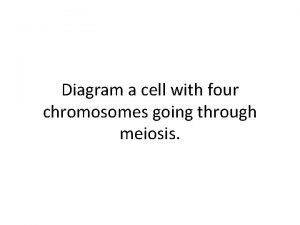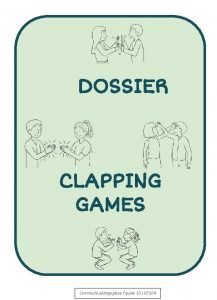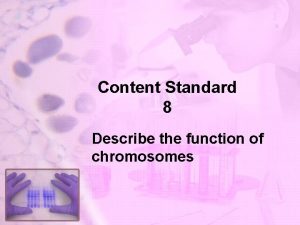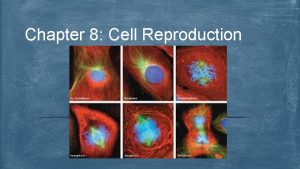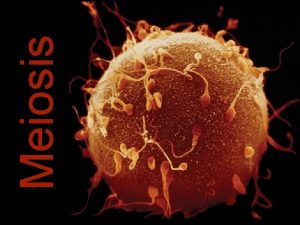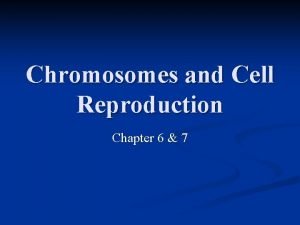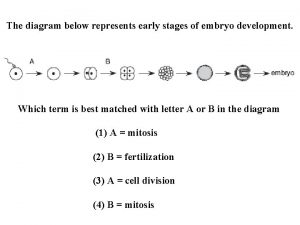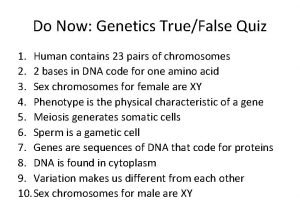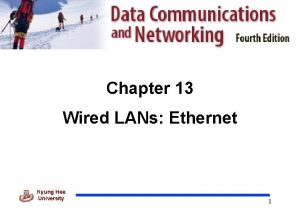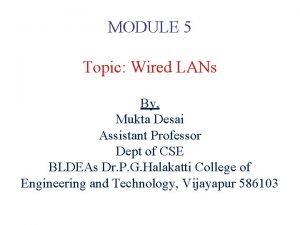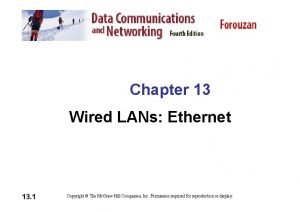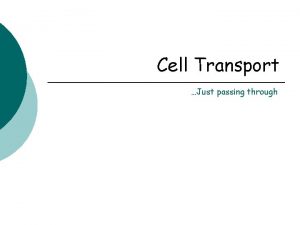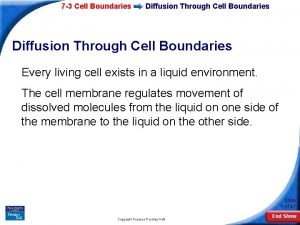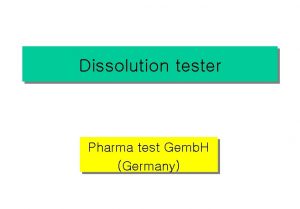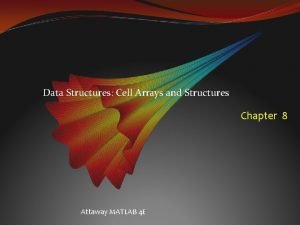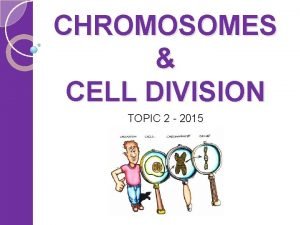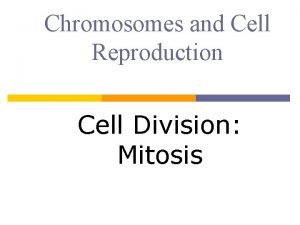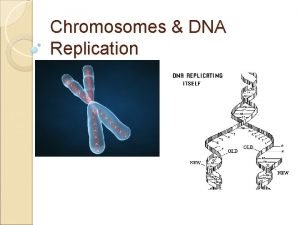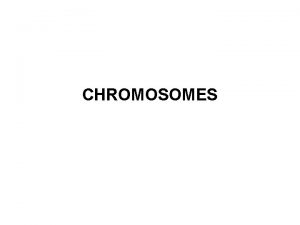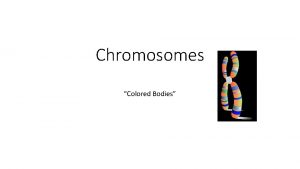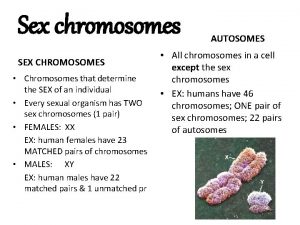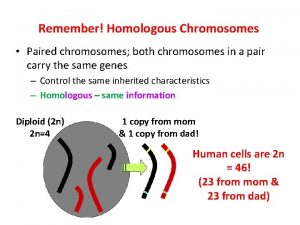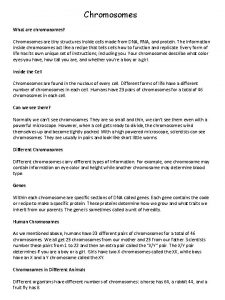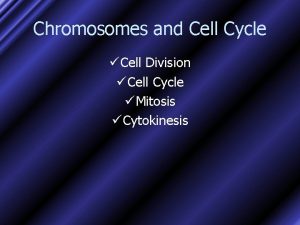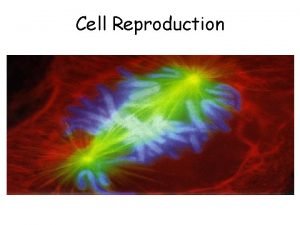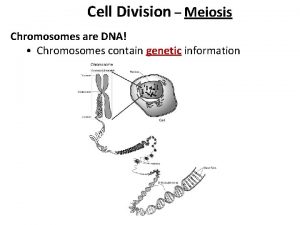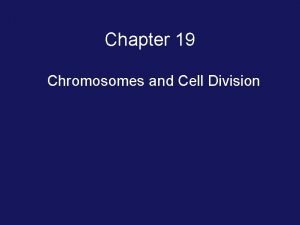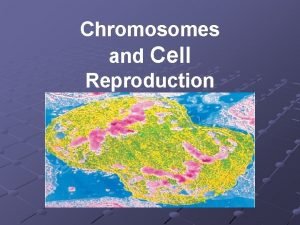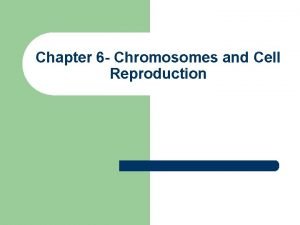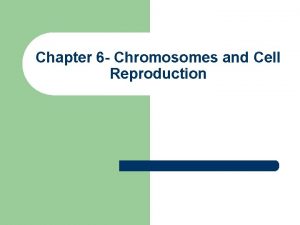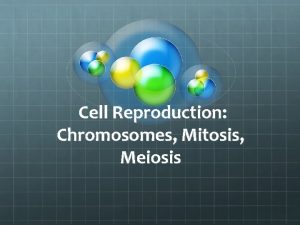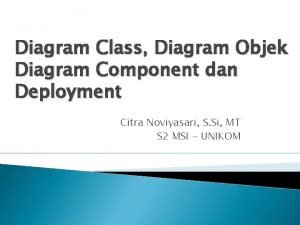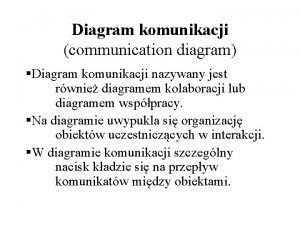Diagram a cell with four chromosomes going through


























- Slides: 26

Diagram a cell with four chromosomes going through meiosis.


Mitosis vs. Meiosis Mitosis • One division • 2 diploid daughter cells • Identical to parent cell http: //highered. mcgrawhill. com/sites/0072495855/stu dent_view 0/chapter 28/animati on__how_meiosis_works. html Mitosis • Two divisions • 4 haploid daughter cells • Genetically different from parent cell

Nucleus chromosomes

• Get one small, one medium and one large of each color chromosome. • What do the colors represent? • The Beads?

• Pair up chromatids with same size and color

• • Pair up chromatids with same size and color What does this represent? What stage? Haploid or diploid?

• Match homologous chromosomes

• Match homologous chromosomes • What are homologous chromosomes. Carry the same traits Each homologous pair has one from each parent

Demonstrate crossing over during prophase.

Demonstrate crossing over during prophase.

• Demonstrate metaphase

Demonstrate metaphase

• Demonstrate the first division • Anaphase I and Telophase I

• Demonstrate the first division • Anaphase I and Telophase I

• Move your cells through the second division.

• Move your cells through the second division.

• How many daughter cells do you have? • Are the daughter cells haploid or diploid? • Are the cells genetically Identical or different from the parent cell?

4 Haploid Daughter Cells

Parent Cell Daughter Cells

Possible Combinations of chromosomes n 2 What does n represent? What was our haploid number of chromosomes? What is the possible number of combinations? 8 In people possible 8388608 combinations. • http: //highered. mcgrawhill. com/sites/0072495855/student_view 0/chapter 28/animation__random_orientation_ of_chromosomes_during_meiosis. html

Sexual Reproduction • • Combines the genetic material of two organisms. Introduces new gene combinations in a population. Leads to genetic Variability in the population. Gametes produced in meiosis fuse to form a zygote. – Gamete-reproductive cell that contains the haploid set of chromosomes…. . sperm and egg – Zygote- Cell formed from fusion of gametes that contains the diploid set of chromosomes.

Sexual Reproduction Methods • External Fertilization: the eggs are fertilized outside of the body • Internal Fertilization: the eggs are fertilized within the female reproductive tract • Conjugation: cells exchange genetic material – Prokaryotes

Asexual Reproduction • • • Offspring arise from a single parent. Offspring genetically identical to parent. More likely to inherit mutations. Leads to less diversity. Mitosis

Asexual Reproduction Methods • Budding – offspring grows out of the body of the parent. • Spores – a reproductive cell capable of developing into a new individual without fusion with another reproductive cell. • Fission – separation of the body into two new bodies

Quiz • Compare and contrast sexual and asexual reproduction.
 Meiosis diagram
Meiosis diagram Tic tac toe going high going low going criss cross lollipop
Tic tac toe going high going low going criss cross lollipop If you are going through hell keep going
If you are going through hell keep going Functions of the chromosome
Functions of the chromosome Diploid vs haploid number
Diploid vs haploid number Diagram of mitosis
Diagram of mitosis Chapter 6 chromosomes and cell reproduction
Chapter 6 chromosomes and cell reproduction Animal vs plant cell
Animal vs plant cell What is an organelle
What is an organelle Tonoplast
Tonoplast Smooth endoplasmic reticulum function simple
Smooth endoplasmic reticulum function simple Cephalocaudal growth
Cephalocaudal growth The diagram below represents chromosomes in a zygote
The diagram below represents chromosomes in a zygote Chromosome labeled
Chromosome labeled Dna chromosomes genes diagram
Dna chromosomes genes diagram Through one man sin entered the world, and through one man
Through one man sin entered the world, and through one man Through and through furcation
Through and through furcation Advantages and disadvantages of tangential sawing
Advantages and disadvantages of tangential sawing I remember the night my mother
I remember the night my mother Ethernet evolution through four generations
Ethernet evolution through four generations Four generations of ethernet
Four generations of ethernet Ethernet evolution through four generations
Ethernet evolution through four generations First ethernet
First ethernet Just passing through cell membrane
Just passing through cell membrane Diffusion through cell boundaries worksheet answers
Diffusion through cell boundaries worksheet answers Flow through cell 용출
Flow through cell 용출 Iterate through cell array matlab
Iterate through cell array matlab
